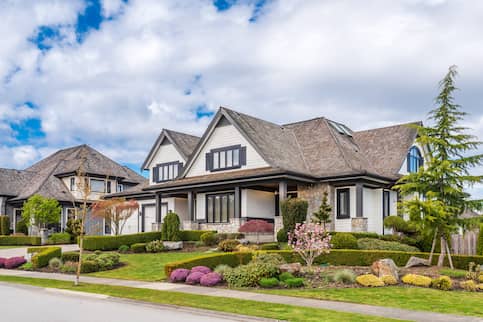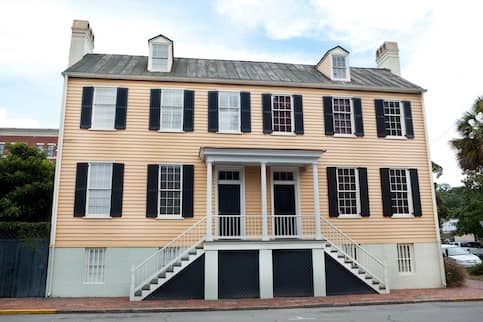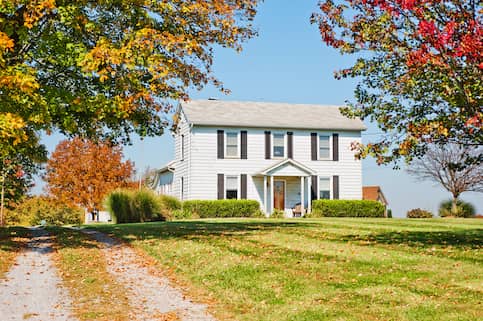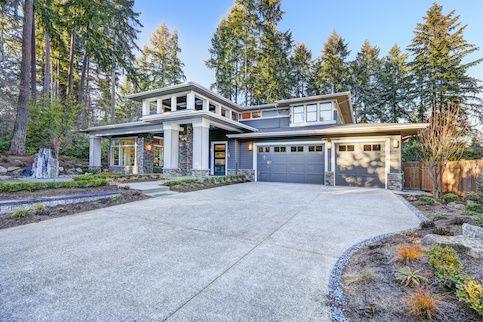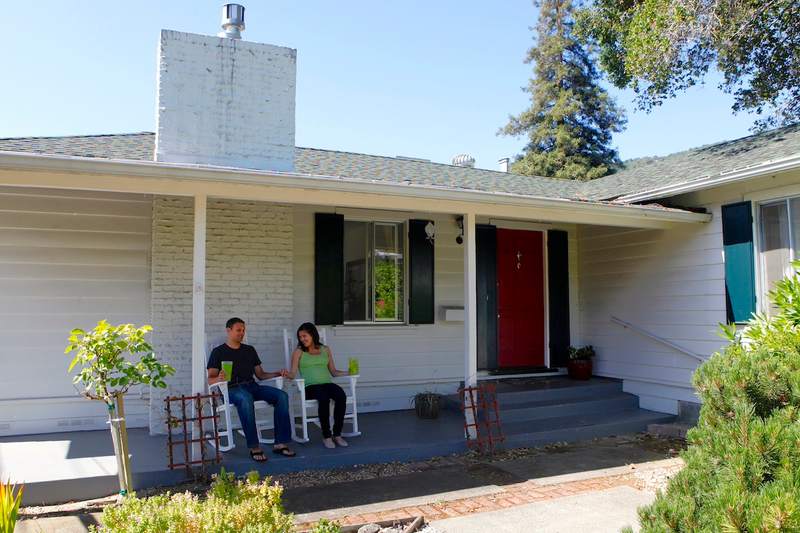Want to pay less interest on your mortgage? Want to pay off your mortgage debt faster? A shorter-term loan such as a 10-year, fixed-rate mortgage can help. If you take out one of these loans, you could pay tens of thousands of dollars less in interest than you would with a longer-term mortgage, such as the popular 30-year, fixed-rate mortgage.
What Is A 10-Year, Fixed-Rate Mortgage?
A 10-year, fixed-rate mortgage is similar to any other fixed-rate loan product: Throughout the life of this loan – 10 years, in this case – your mortgage interest rate will remain unchanged. If your rate is 5.88% when you take out your loan, it will remain at that same figure 10 years later.
The only way your interest rate will change is if you refinance your 10-year, fixed-rate mortgage to a new loan with a different term or interest rate.
A 10-year mortgage is considered a short-term mortgage, one with a relatively short lifespan. Other popular mortgage types, such as a 30-year, fixed-rate mortgage, are considered long-term loans.
See What You Qualify For
Buy A Home
Discover mortgage options that fit your unique financial needs.

Refinance
Refinance your mortgage to have more money for what matters.
Tap Into Equity
Use your home’s equity and unlock cash to achieve your goals.
How Does A 10-Year, Fixed-Rate Mortgage Work?
With all fixed-rate loans, you’ll pay back a certain amount of your loan in regular monthly payments. These payments will cover your loan’s principal balance and the interest you owe on this balance. Most lenders will require that you pay extra each month, too, to cover your property tax and homeowners insurance payments.
The biggest differences between a 10-year, fixed-rate mortgage and a longer-term one? The interest rate and monthly payment.
Because you are compressing your payments into a shorter repayment time, your monthly payment will be larger with a 10-year loan than it will be with a 15-year, fixed-rate or 30-year fixed-rate mortgage. You’ll need to make sure that you can afford this larger monthly payment.
On the positive side, you’ll pay less interest with a 10-year, fixed-rate mortgage. Lenders typically charge lower interest rates for these loans because they come with less risk: You pay back a 10-year loan in a shorter amount of time and pay off more of your loan with each monthly payment.
Because of the shorter term, you’ll pay less interest over time, too. The longer your loan’s term, the more interest you’ll pay if you take the full term to pay it off. This is why you’ll pay more interest, often tens of thousands of dollars more, when you take out a 30-year mortgage than when you pay off a shorter-term, 10-year, fixed-rate loan.
You can choose from many types of home loans when you need to finance the purchase of a home. These include government-backed loans, loans with various term lengths or ones with fixed or adjustable rates.
What Are 10-Year, Fixed-Rate Interest Rates Vs. 30-Year Loans?
Lenders consider many factors when determining your loan’s interest rate, including your credit score, how much of a down payment you provide, the amount of debt you must pay each month and the type of mortgage you take out. Usually, your interest rate will be lower with a shorter-term mortgage.
Your interest rate will typically be highest with a longer-term mortgage such as a 30-year, fixed-rate loan. Many consumers choose a 15-year, fixed-rate mortgage if they want to lower their interest rate but not bump their monthly payment up by as much as if they were paying off an even shorter-term 10-year, fixed-rate mortgage.
If you want the lowest interest rate, though, taking out a shorter-term loan such as a 10-year mortgage is the right move, if you can afford the higher monthly payment that comes with a shorter term.
Find out if a 15-year fixed loan is right for you.
See rates, requirements and beneifts.
How Much Does A 10-Year Vs. 30-Year, Fixed-Rate Mortgage Loan Cost?
How much will you pay each month with a 10-year mortgage? How much will you save in interest payments? Consider the chart below as an example. Remember that the monthly payments listed below are hypotheticals and only include the money you’d pay for your loan’s principal and interest. It does not include additional dollars to cover property taxes and homeowners insurance. Your actual numbers will depend on your loan amount, financial situation, loan type and more.
10-Year, 15-Year And 30-Year Mortgage Rates, Payments And Cost
Mortgage Loan Of $375,000 | Monthly Payment | Typical Interest Rate Premium | Total Interest Paid If You Keep Loan To Full Term |
|---|---|---|---|
10-year loan term | $3,995 | 5.10% | $104,497 |
15-year loan term | $3,124 | 5.80% | $187,335 |
30-year loan term | $2,270 | 6.09% | $442,221 |
Are There 10-Year, Adjustable-Rate Mortgage (ARM) Loans?
An adjustable-rate mortgage (ARM) is a type of loan in which your interest rate can rise or fall throughout the life of the loan. Typically, these loans come with a fixed period in which your rate will remain the same. After the fixed period ends, your loan enters its adjustable phase, with its interest rate typically rising or falling each year depending on what economic index your mortgage is tied to.
Most ARMs have a longer term than 10 years. You might think that the 10/1 ARM is an example of a 10-year ARM. But in this case, the 10 means that your loan’s fixed period will last for 10 years, not that its total term is 10 years. After 10 years, your loan’s interest rate will adjust once a year.
Most ARMs come with terms of 15 or 30 years, though some lenders might offer ARMs with a shorter, 10-year term.
What Factors Should I Weigh When Considering A 10-Year Repayment Term?
Your Monthly Payments
The biggest drawback to a 10-year, fixed-rate loan is the higher monthly payment it will bring. As you can see from our chart above, you’ll pay significantly more each month with a 10-year, fixed-rate mortgage.
And that payment could rise over time, too. That’s because most lenders require you to pay extra each month to cover your home’s property taxes and homeowners insurance payments. If your property taxes or homeowners insurance premiums rise, your monthly payment might jump, too.
The key is to make sure you have enough room in your budget for the higher payments that come with a 10-year mortgage. Before applying for one of these loans, make a list of your monthly expenses – including ones that change each month – and income. This will tell you how much you can afford to spend each month on a mortgage payment.
You can use our mortgage calculator to see how shortening your repayment period changes your monthly mortgage payment.
Your Goals
Maybe you want to take an early retirement. Paying off your mortgage quickly, which you can do by shortening your loan’s term to 10 years, can help eliminate your mortgage payment before you’re ready to retire. Or maybe you want to spend as little as possible on a mortgage. Taking out a 10-year loan that costs far less in interest over time can help you accomplish that goal.
But different goals might require a longer-term mortgage. Maybe you’re starting a family or saving money for a child’s college education. You might want the lower monthly payment that comes with a longer-term mortgage loan. This will free up more money that you can spend on these other goals.
Your Opportunity Costs
If you’re spending more of your income on your mortgage each month, something that could happen with a shorter-term mortgage, you might miss out on the chance to spend those dollars in other ways.
If you are spending less each month on a mortgage, you’ll have more money to invest in a 401(k) plan, which will pay off come retirement time. You might also have more money to sink into investments that could provide returns high enough to make up for the increased money you spend on interest when taking out a longer-term loan.
The Pros And Cons Of 10-Year, Fixed-Rate Mortgages
As with all mortgage types, the 10-year, fixed-rate mortgage comes with its own positives and negatives.
Pros
For homeowners who can afford the higher monthly payment, 10-year, fixed-rate home loans are a smart financial choice because:
- You’ll pay off your mortgage faster: It will only take you a decade to fully repay your 10-year loan if you make your payments on time. This will eliminate what will probably be your largest monthly bill and provide you with more financial freedom. You can use the money that you would have otherwise spent on mortgage payments to invest, save for a child’s college education or build your retirement funds.
- Your mortgage costs less overall: The longer it takes to repay your home loan, the more it will cost you. Taking out a 10-year mortgage can save you tens of thousands of dollars in interest payments.
- You build home equity rapidly: You build equity in your home whenever you make a monthly mortgage payment. If you are taking out a shorter-term mortgage, more of this monthly payment goes toward paying off your loan’s principal balance. This means that you will build your home equity faster.
Cons
This doesn’t mean that a 10-year, fixed-rate mortgage doesn’t come with drawbacks. The larger payments that come with a shorter-term loan could place a financial strain on your household budget:
- You may end up feeling house poor: If you struggle to make your monthly payment each month, you might feel house poor. This happens when you are spending too much of your monthly income on your mortgage and other housing expenses. The bigger payments of a 10-year loan could drain the joy out of owning a home.
- You’ll be carrying a high debt-to-income ratio (DTI): Your debt-to-income ratio, or DTI, measures how much of your gross monthly income your recurring debts eat up each month. Your DTI will be higher if you are making a larger mortgage payment each month. If it is too high, you might struggle to earn approval for future loans – including auto or student loans – from lenders.
- You’ll miss other investment opportunities: Putting all your extra income into paying off your mortgage as quickly as possible could make it difficult to save for other financial goals, like retirement. You might also struggle to find enough money to put into other investments that could earn you a high return.
See What You Qualify For
You can get a real, customizable mortgage solution based on your unique financial situation.
Alternatives To 10-Year, Fixed-Rate Loans
If you want to pay off your mortgage early without committing to the larger monthly payments of a 10-year, fixed-rate loan, you do have options.
Make Extra Payments
Maybe you want a 10-year mortgage but you also seek the flexibility to make a smaller payment if you suddenly face financial difficulties. Taking out a 15-year or 30-year, fixed-rate mortgage and then making the same monthly payments that you’d make if you were paying off a 10-year mortgage could work.
First, you’d need to ask your lender what your monthly payment would be if you were paying off a 10-year mortgage. You can then make that payment in any month that fits comfortably in your budget. If you’re feeling a financial strain in a given month – say you lost overtime work or you faced an expensive home or car repair – you could instead make the lower payment required of a 15-year or 30-year loan.
It’s important to ask your lender about how to apply your extra payments. Make sure your lenders applies them toward paying off your principal balance, not your loan’s interest. Be aware, too, that some mortgages come with prepayment penalties that kick in if you pay off your loan too quickly.
Make Biweekly Payments On Your 15-Year Mortgage
You can pay off your mortgage quickly, too, by taking out a 15-year, fixed-rate mortgage and making biweekly payments, instead of monthly ones, on it.
With biweekly payments, you make a mortgage payment every two weeks instead of once every month. The amount you pay every 2 weeks is equal to half of a full month’s payment. If you make biweekly payments, you’ll make 26 in a year, equal to 13 total monthly payments. This means you’ll make one extra full payment every year. This will reduce the number of years it takes to pay off your mortgage and reduce the amount of interest you’d pay if you hold your loan for its full 15 years.
Recast Your Mortgage
If you have extra money, you can also complete a mortgage recast of a longer-term loan. In a recast, you make a single lump-sum payment that reduces your mortgage’s principal balance. Once you make this payment, you can ask your lender to recalculate your monthly payment with the new, lower balance, while keeping your loan’s original interest rate and term.
How To Tell If A 10-Year Mortgage Is Right For You
Is this type of loan a good fit for you? Here are some factors to consider:
You Can Make Monthly Payments Comfortably
Make sure that the higher payments that come with this mortgage won’t place a financial strain on your household budget. Paying off your mortgage quickly can be a smart move, but not if doing so makes it a struggle to pay your bills each month.
You Have Maxed Out Your Retirement Plan Contributions
A shorter-term mortgage loan makes more sense if you’re already contributing as much as you can to your retirement accounts. You want to be financially comfortable once you leave the working world. By depositing as much money into a 401(k) plan or other retirement account throughout your working years, you’ll boost the odds of this happening. If you’re maxing out your contributions and can afford the higher monthly payments then this type of mortgage might make sense.
10-Year Mortgage FAQs
Questions about 10-year mortgages? That’s not unusual. Here are answers to a couple more common questions:
Can I refinance my 30-year loan into a 10-year loan?
You can refinance your existing 30-year, fixed-rate mortgage into a 10-year loan. It’s best to do this only after determining that your household budget can handle the larger monthly payments that come with a 10-year loan.
The Bottom Line: A 10-Year Mortgage Helps You Get Out Of Debt Faster
With a 10-year mortgage, you can pay off your mortgage debt faster. You’ll also spend far less on interest payments. Make sure, though, that you can comfortably afford the higher monthly payment that comes with these loans. Otherwise, the financial burden could strain your budget and result in missed mortgage payments.
Take the first step toward buying a house.
Get approved to see what you qualify for.

Dan Rafter
Dan Rafter has been writing about personal finance for more than 15 years. He's written for publications such as The Washington Post, Chicago Tribune and Wise Bread.
